In anime, ahegao アヘ顔 means a certain iconic panting facial expression, an "O-face." It's a recurring trope in drawn pornography (hentai 変態), in non-drawn pornography, and even in non-pornography. Pretty much a meme at this point.
Anime: Watashi ga Motenai no wa Dou Kangaetemo Omaera ga Warui! 私がモテないのはどう考えてもお前らが悪い! (Episode 5)
Not to be confused with ahoge アホ毛, which is something else entirely.
Trope
An ahegao is an expression which shows (sexual) euphoria and an open, panting mouth. There are many variations of it: with saliva dripping or sticking from the ceiling of the mouth, with tongue out, with eyes rolled up, etc.
Anime: Shinchou Yuusha 慎重勇者 (Episode 10)
Although it's known mostly for its occurrence in adult works, it also shows up in non-adult lewd series, the ecchi genre, and even in gag comedy for general audiences.
- toku ni {ZZ (tsuinzetto) to nigouki ga
douji ni zecchou wo
mukaeru} toki no hyoujou ga
mou saikou desu ne
特にZZと弐号機が同時に絶頂を迎えるときの表情がもう最高ですね
In particular, the expression [on their faces] when {Twin-Z and Machine #2 simultaneously approach climax} is the greatest. - konna ii ahegao wo kakeru
sakka wa sousou imasen yo
こんないいアヘ顔を描ける作家はそうそういませんよ
There aren't so many artists who can draw ahegao this good.
Ahegao Double Peace
An "ahegao double peace," ahegao daburu piisu アヘ顔ダブルピース, abbreviated AWP, is an ahegao done while making two peace signs, called a "double peace" in Japanese. It's also spelled as ahegao W-peace アヘ顔Wピース, with the "double" W prefix."(dic.pixiv.net)
Anime: Nichijou 日常 (Episode 8)
Anime: En'en no Shouboutai 炎炎ノ消防隊 (Episode 12)
The double peace sign doesn't carry any special sexual connotations in Japanese culture.
Right: Akiyama Mio 秋山澪
Anime: K-On!, Keion! けいおん! (Episode 3)
- Context: a normal (non-ahegao) double peace.
Presumably, the reason why this is a thing is would be because peace signs are often done when making a pose for a photo in Japan, so the sign could get made if they're taking photos during sex.
- hameru
嵌める
To put in. (literally, e.g. a ring into one's finger.)
To have sex. (colloquialism.) - hamedori
ハメ撮り
Taking a photo or video during sex. - hame-piisu
ハメピース
A peace sign done during sex. - hamepisu
ハメピス
Real Ahegao
Since ahegao is just a facial expression, real-life people can do it too. It's not limited to drawings.
However, given it's a completely and totally unnatural expression, real ahegao is pretty much always deliberate. If someone does it it's because it's a meme. People don't ahegao naturally like they laugh in reaction to a joke.
At #katsucon last year I did pop team with Autumn and it was great. 💯 We need to bring it back or else 💢 #popteamepic #popuko #cosplayer #shittycosplay #ポプテピピック #ahegao pic.twitter.com/OlmVaqxCYk
— mika @ setting up this acc! (@thekitsuneblue) March 2, 2019
Kanji & Translation
The word ahegao is a compound of ahe アヘ, an onomatopoeia for *pant*, plus the word kao 顔, which means "face." So ahegao アヘ顔 is, literally, a "panting face."
But wait a second. The word kao, "face," starts with a ka, not with a ga. Why does kao become gao in ahegao? Shouldn't it be ahe-kao?
This happens because of rendaku 連濁, which's a thing that affects the pronunciation of suffixes by adding a diacritic to their first syllable so the whole word becomes easier to pronounce. See:
- ahekao あへかお
- ahegao あへがお
- The ゛ is a dakuten diacritic.
Although kao 顔 is written with kanji, the word ahe アヘ, like most onomatopoeia, doesn't have kanji and therefore can only be written without kanji, so it's spelled with katakana instead.
Like many other onomatopoeia, ahe アヘ has a reduplication: aheahe アヘアヘ., which refers to a continuous panting sound. Basically, If one ahe = one *pant*, then aheahe = *pant pant* or something like that.
- ahe-ahe suru アヘアヘする
To pant-pant.
To be panting. To start panting.
If aheahe アヘアヘ sounds pretty weird for a panting to you, know that it's kind of a panting mixed with gasping, and that there are other sounds for painting in Japanese. Like:
- haahaa はぁはぁ
- heahea ヘアヘア
They're just like "ha," "haa," haahah" and so on.
- hera hera hera hera ahe ahe ahe
へらへらへらへらあへあへあへ
(unintelligible panting.)
There are some Japanese words known in western anime communities that are kind of like ahegao.
For example: gesugao ゲス顔. Its gao is the same gao as of ahegao.
The word tsundere ツンデレ combines tsuntsun ツンツン with deredere デレデレ, which aren't onomatopoeia, but something similar: mimetic words.
Meme Edits
In Japanese, ahegao-kin アヘ顔菌, literally "ahegao germs," refers to a meme of editing or redrawing random characters with an ahegao face.(dic.pixiv.net)
The first image above is the first one posted on Pixiv, by user Yukiman ゆきまん, in 2008-07-10. In the post, the author says the illustration is based on an ahegao edit of Suiseiseki 翠星石 (from Rozen Maiden) posted in some thread on 2chan (futaba 双葉).
I haven't been able to confirm which image was it exactly, since it was posted in a random thread on the internet over a decade ago, so it's long gone, however, it's probably going to be this one:
Right: Souseiseki 蒼星石
Anime: Rozen Maiden: Träumend, ローゼンメイデン トロイメント (Episode 1)
- The top image is the edit. The earliest instance I found of it was in a random Russian blog in a post from 2007-12-28. The bottom image is from the actual anime episode.
- Differences between the edit and the original image include:
- Contrast, color balance. It could be due to the source used, but there doesn't seem to be any images of this screencap with similar color balance as the edit, so maybe the edit changed the colors for some reason.
- Cropping and scaling. The edit is 4:3 while the original is 16:9. What's the point of cropping it? It even cropped Souseiseki in half. Maybe it's because the source was recorded from a 4:3 TV instead of being taken from Blu-rays?
- Souseiseki has a large sweat drop dripping from her hair. In the anime, she didn't make an expression like that, with eyes closed ito-me 糸目 style.
It could be another image, but, I mean, I'm not aware of any other ahegao edits of Suiseiseki that have been posted all over the internet, so it's very likely this one.
"Aheagao"
The romaji ahegao is commonly misspelled "aheagao," due to this misspelling being used in the often reposted meme template know your gaos.
References
- アヘ顔菌 - dic.pixiv.net, accessed 2021-05-19.
- アヘ顔ダブルピース - dic.pixiv.net, , accessed 2021-05-19.
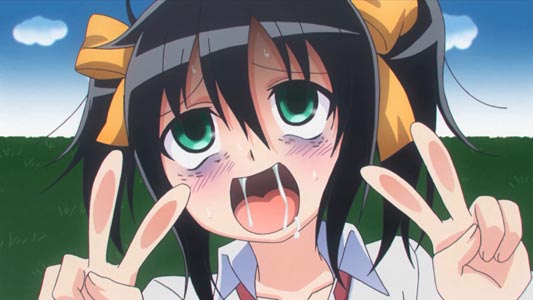
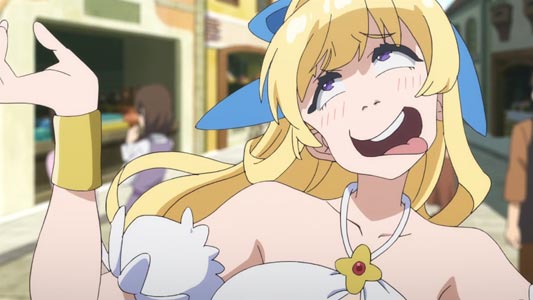
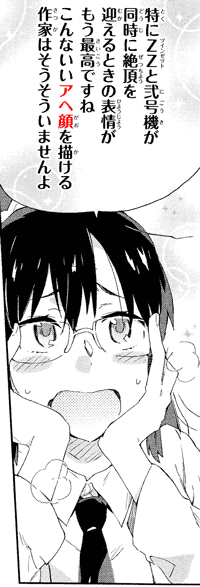

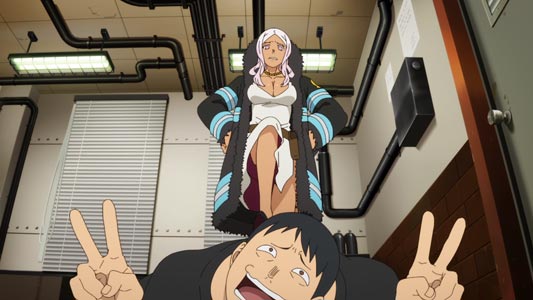
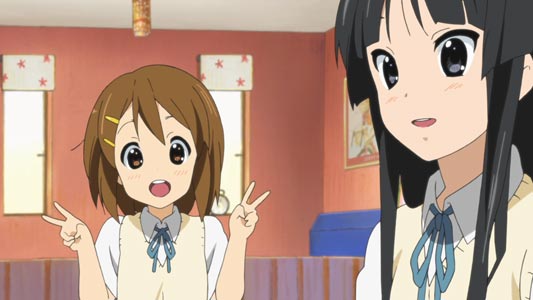

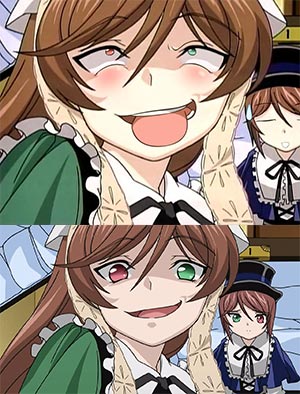
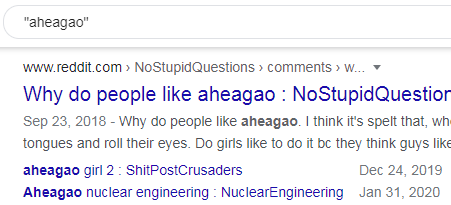
No comments: